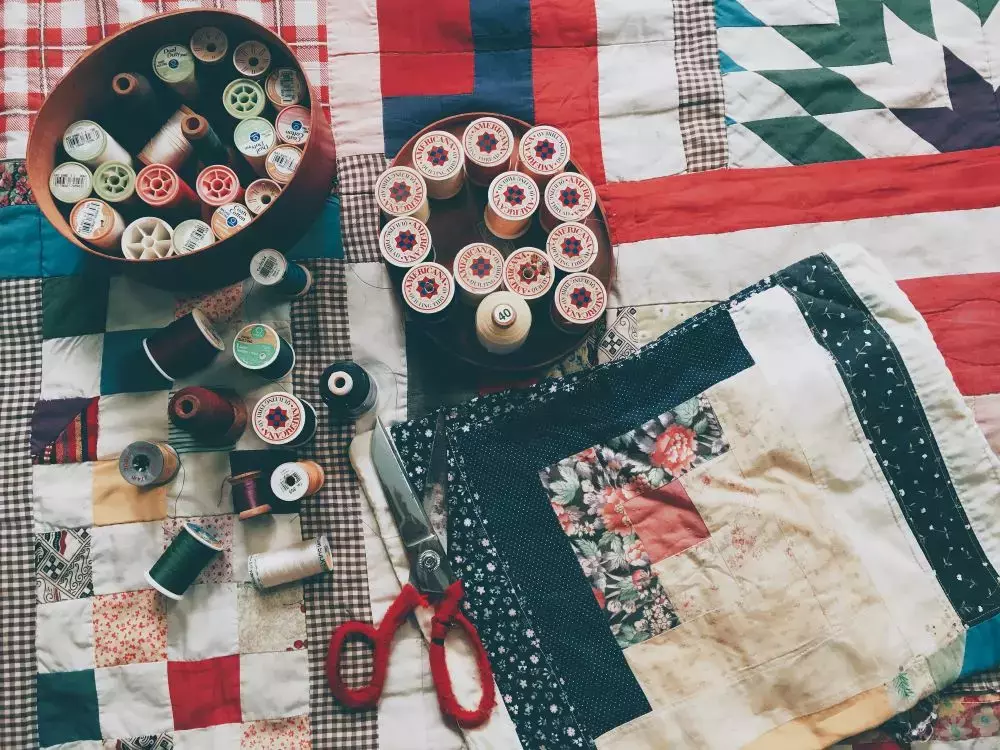5 Pieces of Advice that Every Quilter Should Know
2020-01-03
Although quilting seems very easy to an outsider, a quilter at any level of skill will recognize that these massive projects are rather complex and can quickly become overwhelming. It's an unexpectedly stressful hobby and one which prompts family and friends to expect gorgeous gifts that require weeks or months of labor.
Don’t Take on More Than You Can Handle
It's a wonderful bit of advice no matter your hobby, but it's especially true with quilting. If you're new to quilting, focus on individual squares of a small quilt, or create a baby quilt. Find ways to downsize your projects without getting discouraged. Strip quilts, from strip cut bundles, can help remove the stress of planning colors, designs, and arranging squares.
Always work slowly on your projects. When you're first starting, try to track your time with a tool such as the "Hours" app or Toggl. That way, you can begin to determine how long an entire project or specific task will take you and then plan accordingly.
Whenever you start feeling overwhelmed, consider breaking your project down into smaller pieces or chunks of time.
Get the Proper Tools
Here's the giant list of everything that you do need for quilting:
- Fabric (of course)
- Rotary rulers and cutters
- Seam ripper
- Marking pens
- Scissors of varying sizes and styles
- High-quality thread for binding
- Sewing machine or quilting machine
- Design board (more on this in a moment)
On top of these tools, you might consider investing in a variety of different quilting rulers, cutouts, appliques, and even different sewing machines. While there are plenty of tools that companies will try to pitch at you that you don’t need, this list is pretty non-negotiable if you’re going to start quilting as a hobby.
If you're not interested in investing in these tools to start with, then you'll have a hard time getting the results you want. It's possible to do a quilt entirely of sewn together bits from a charm pack on a sewing machine and then complete the quilt with batting and a back that’s been pre-done at a fabric store with nothing more than a sewing machine and a walking foot. But it's hard and frustrating.
Use a Design Board
What is a design board? A quick search will bring up these giant contraptions that “hang” your quilt squares and cost hundreds of dollars. Fortunately, you can make your own for just a few bucks, and you probably have the supplies in your home already. A design board is essentially what you'll use for planning, and it helps to bring together the picture of a completed quilt as you finish each square.
A design board will help you spot mistakes before you’ve hit a point of no return. It’s also excellent for keeping track of your pieces, and level of completion.
Pre-Wash (and Iron) Your Fabric
A topic of hot debate, but still, it's an age-old habit of many well-established quilters. Wash your fabric. Wash your material to ensure that it doesn't bleed through and destroy areas of your quilt. Imagine having a few red squares that pop, and then after the first wash of your completed project, you have giant pink spots. It would be a tragedy.
But there’s another problem that pre-washing addresses and that’s shrinkage. Cotton shrinks, and if you've already made the entire quilt, then you'll be in a tight spot when the fabric is super shrunken and huddled against its seams. Then don't forget to iron your fabric before you do any actual sewing!
Keep Your Scraps
When you have scraps that are 1-inch wide by only a few inches long, it seems unreasonable to keep them. Long scrap pieces can be used for binding, and even small strips are suitable for appliques to make a square a little extra special. As seen on How to Make an American Quilt, old fabric and scraps can make for unbelievably unique designs. Show off your creativity by using scraps from one project in another or celebrate a beloved pattern again and again.
These tips aren't something that anyone innately knows when they start quilting. Many of these, in fact, are lessons that people learn that hard way, and often, more than once.
Whether you are a seasoned quilter or starting out for the first time, GoldStar Tool has the essentials you’ll need to get started. Be sure to check out our vast selection of sewing supplies and contact us if you can’t find what you are looking for.





